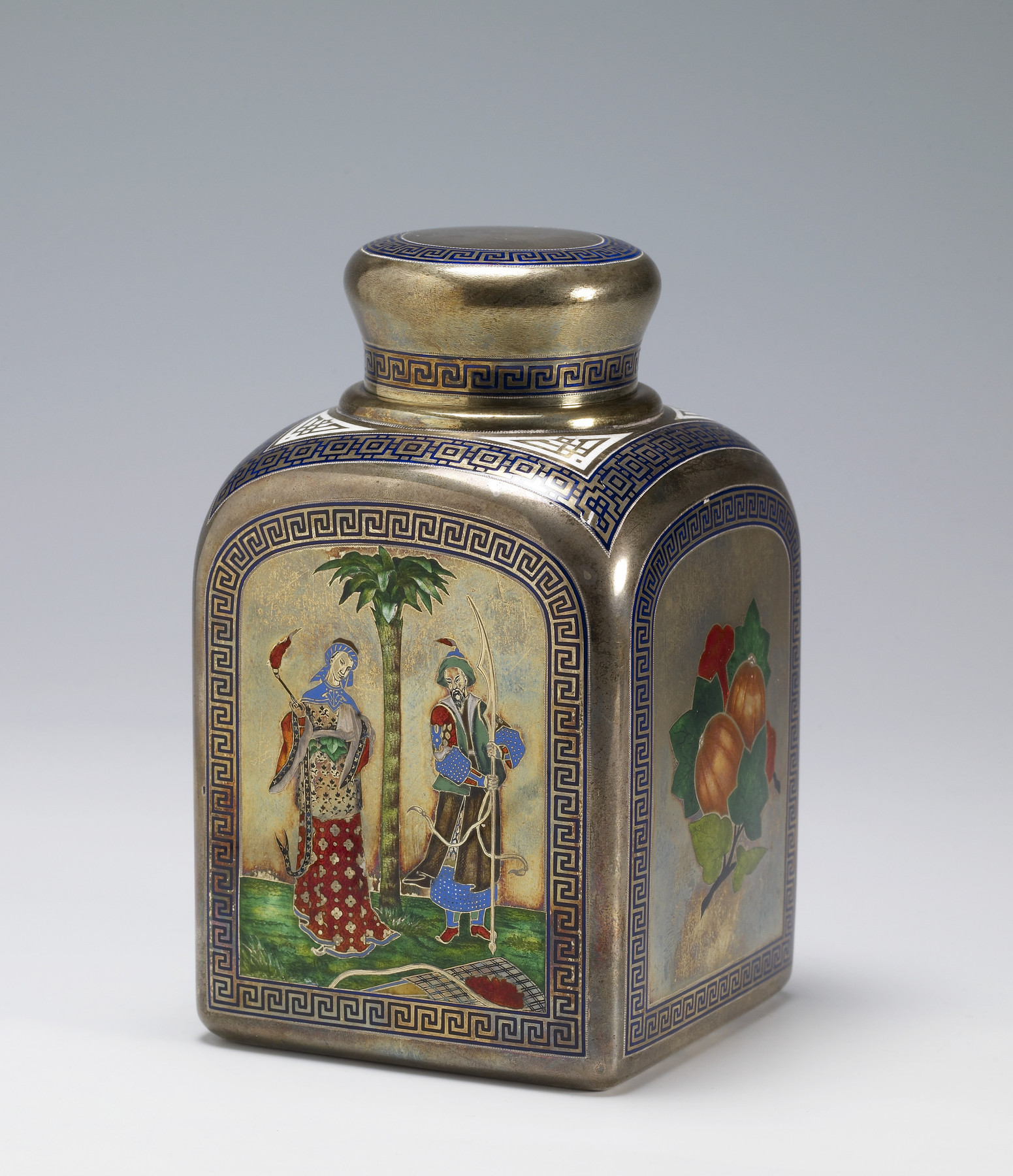Tea Caddy with Chinoiserie Couple
(18th and 19th Centuries )
The rectangular caddy has arched shoulders and a round, bulbous top. On one face, in translucent and opaque champlevé enamel, a chinoiserie courtesan and a warrior holding a halberd flank a palm tree. The other faces are decorated in translucent champlevé enamel with motifs composed of a couple of lychee fruit, green leaves, and red blossoms. Enameled in blue are the key patterns bordering ths sides. Blue and white enamels are used for the geometric patterns on the shoulders.
Beneath the top is a silver gilt stopper with a pull ring and a cork seal.
Inscription
Provenance
Provenance (from the French provenir, 'to come from/forth') is the chronology of the ownership, custody, or location of a historical object. Learn more about provenance at the Walters.
Leo Kaplan, New York [date and mode of acquisition unknown]; Jean M. Riddell, Washington, D.C., May 9, 1989, by purchase; Walters Art Museum, 2010, by bequest.
Geographies
Russia, Moscow (Place of Origin)
Measurements
H overall: 5 3/8 x W: 3 3/8 x D: 3 3/8 in. (13.6 x 8.5 x 8.5 cm)
Lid H: 1 x Diam: 2 1/16 in. (2.5 x 5.3 cm)
Stopper H with handle up: 1 3/4 x Diam: 1 11/16 in. (4.4 x 4.3 cm)
Stopper H with handle down: 1 1/16 in. (2.7 cm)
Credit Line
Bequest of Mrs. Jean M. Riddell, 2010
Location in Museum
Not on view
Accession Number
In libraries, galleries, museums, and archives, an accession number is a unique identifier assigned to each object in the collection.
In libraries, galleries, museums, and archives, an accession number is a unique identifier assigned to each object in the collection.
44.962


